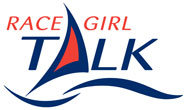Sailboat Racing Trim — Part 15
In Chapter 15 of his book Racing Trim, Bill Gladstone talks about rig tuning. The following post shows a short summary of the highlights I got out of that chapter.
Tuning Masthead Rigs
- Side Bend & Lean — Make sure that the mast is centered in the deck. Tighten the shrouds (uppers first) evenly to make sure that tensions and distances are even. Don’t over tighten the shrouds. Sail in a moderate breeze on both tacks and watch for symmetry in the mast. Tighten the leeward shrouds and count the number of turns to make the shroud tight. Watch out for shrouds that are too tight. This can lead to failure of the rig. Keep a record of the base tuning positions. Number of turns on the turnbuckles can then be increased or decreased based on conditions for any given day.
- Rake — This is how much the mast leans forward or aft. More rake increases weather helm. Rake should be tuned so that there is a reasonable amount of weather helm in the conditions which the boat is most likely to be sailed. Headstay tension can be increased on heavy air days to help balance weather helm.
- Pre-Bend — Pre-bend is achieved through mast compression (tight rig) and putting blocks in front of the mast where it enters the deck. This is permanently tuned into the mast. Pre-bend helps achieve correct adjustment in the main. As the sail wears and stretches, the pre-bend may need to be adjusted to account for the changes in the sail.
- Mast Bend & Headstay Sag — Increasing tension on the back stay will provide compression to bend the mast, as well as, increase tension to the headstay. Baby stays can then also be used to help with ast bend.
- Tuning a fractional rig is somewhat different from tuning a masthead rig because of all of the different configurations of fractional rigs.
- If spreaders swing, they should be fixed in position before rig is tuned.
- Put max backstay on and make sure the mast is still centered.
- Release backstay and adjust lowers so that the main fits appropriately.
- The rig is now tuned for max headstay tension. Backstay can be used to bend the mast and provide additional headstay tension. The mast will bend more easily if the lowers are eased a bit.
- There is only so much headstay tension that can be taken advantage of without running backstays.
- Easing lowers may reduce side bend.
- Rake should be set for a balanced helm.
- For additional adjustment or fine tuning, options include tension of uppers, tension of lowers, and spreader sweep.
Always remember that the tune of the rig must match the cut of the sails. This may change over time or with age of the sails. Small rig tuning changes can mean big changes in boat performance.
This is the fifteenth in a series of posts based on Bill Gladstone’s book Racing TRIM from the North U. Series. Periodically, I post about a chapter or two. This will be my short summary of what I’ve read. You can read the posts to get my abbreviated summary; or you could read through the books with me. Your comments can help point out what you find most interesting, or even poke fun at what I do and don’t know. If you are interested in getting this book, you can find it in the online store section of NorthU.com for $25.

